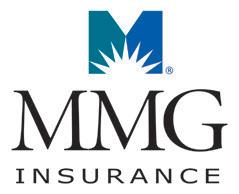
You don’t know what’s coming
Proactive relationships can help during worst-case scenarios






You don’t know what’s coming
Proactive relationships can help during worst-case scenarios




When it comes to crisis management, the mindset of preparing for the worstcase scenario will help you be ready for and endure any chaotic situation. Insurance has a role to play in crisis management—in fact, some insurance companies offer crisis management insurance for businesses.
But how robust is your agency’s crisis management plan? Will you be caught off guard, or will you come out the other side ready to pick up where you left off? That way you can be there to help your clients when they need you the most.
1. Your agency may face a financial crisis—when your organization loses so much money it’s difficult to meet all of its financial obligations. When you are facing a financial crisis, some causes may be a loss of revenue, inflation, bankruptcy, loss of market and sudden change in market trends.
2. A natural crisis can strike anytime and anywhere—your agency (and your clients) could be stopped in its tracks by flooding, wildfires, snowstorms and more. While working from home can mitigate some of the stress from this crisis, the loss of infrastructure and information (e.g., servers, paper records) would still be a tremendous obstacle to overcome.
3. An organizational crisis usually occurs in three ways:
• a crisis of deception: an employee misrepresents your agency;
• a crisis of management: management involves itself in unethical practices; and
• a crisis of skewed management values: management solely focuses on short-term gains with no long-term planning.
The consequences of this type of crisis can be profound. There may be reputational damage and even legal action against your organization.
4. Personnel crises can be especially severe. This means an employee was found involved in unethical—or worse—illegal behavior. A personnel crisis doesn’t even have to start in the office. It can occur due to the staff member’s conduct in his or her private life.
5. When a technological crisis occurs, it means that the technology you rely on suddenly fails, or even if you’re technologically outpaced by a competitor. Servers where you store valuable information could crash, websites could go down, you may not update the tech you use in a timely manner; or you could be targeted by malicious actors: all of this, and more, can trigger this kind of crisis.

Efficient information delivery. When a crisis hits your agency, provide only the essential information to relevant internal and external properties—brevity and clarity is key.
Be an effective communicator. When you need to share information to your team, remember these three “R’s.” Review information with your team, repeat said information and reinforce it with key points and additional context.
Be transparent. It’s impossible to have all the answers—be clear about what you’re able to do and what you know.
Be there for your team and others. Whether you’re a leader or not, it’s important to be vulnerable, ask people how they’re doing and carefully listen.
Time sensitivity. Every second wasted means damage to your agency and reputation. Act quickly and decisively, but don’t make choices based on impulse.
Information management. When a crisis occurs, it may not be until after the crisis is resolved that you have a complete picture of what happened. During a crisis, make sure you have the most complete information available at all times.

Stakeholder relationships. From the leadership to the employees to the customer, juggling these relationships in a crisis is paramount.
Risks and outcomes. Weighing your options is important. Be conscious of the short- and long-term consequences of your actions.
There’s a fine line between having a crisis management plan and lacking one. Having a plan can minimize damage, can protect everyone involved and can provide a framework for future prevention.
Not having a crisis plan means lost money, time, disrupted business and damage to your agency’s reputation.
Even if you can’t prepare for every crisis, at least having a framework will make you flexible enough for an adequate response. Dive headfirst into crafting a robust plan for your agency before a crisis comes knocking at your door.
• A survey by Capterra found that 49% of U.S. businesses have a formal crisis communications plan.
• Another survey from AvidxChange found that only 60% of businesses have a continuity plan.
• Depending on a business’s size, downtime caused by a crisis can cost between $427 to $9,000 per minute.
Matt McDonough, writer/editor & content curator, PIA Northeast
Before a natural disaster hits your community, it’s generally agreed that the best possible thing you can do is evacuate. However, we often hear stories about people staying behind to weather the storm.
Usually, the first question one asks is why: Why would someone try to endure a catastrophic natural disaster? The next question one should ask is: What if they were unable to leave?
Though it is easy to warn people to evacuate, there are material conditions that may prevent them from seeking adequate shelter. Knowing and understanding the reasons of why people stay during a natural disaster can lead society, the government and the insurance industry to change its response to those who stay behind.
People with disabilities and other medical needs are unique, with different levels of need and care. When an evacuation order goes out, they may not have immediate access to transportation that can accommodate them.
Even if they were to reach a shelter, it is unknown if the shelter can meet their needs adequately. Further complications may arise regarding mobility and access to medication.
Do you have an emergency fund? Can it support you or your family for several days, or even weeks? When a natural disaster like a hurricane prompts evacuations, you must consider gas, food and lodging for several days. While the government can offer some financial assistance, there still may be expense gaps and the request could be rejected.
In addition, the disaster may shut down businesses or local transportation (e.g., roads, buses and trains), leaving evacuees and survivors to lose out on income.
Motor vehicles are an easy thing to take for granted. After all, according to the U.S. Department of Transportation Federal Highway Administration, there is a little less than 283.5 million registered motor vehicles in the U.S.—which includes privately and publicly owned cars, buses, trucks and motorcycles.
However, the abundance of vehicles doesn’t mean everyone has access to one. While vehicles are convenient, they do carry significant financial hurdles: gas, maintenance and insurance, as well as the cost of purchasing a vehicle (used or
new). Those who can’t afford a motor vehicle, or those who do not purchase one for personal reasons, simply go without—they either use public transportation or other means. Therefore, in an emergency, those individuals who lack the means to transport themselves have a greater chance of being injured in a natural disaster that requires them to evacuate.
While English is the first language for many people in the United States, there are households that speak Spanish, Russian, Chinese, Arabic and so on. This makes the proper communication of evacuation orders vital. If evacuation orders are difficult to follow for those who speak English as a second language—or those who don’t speak English at all—they may be put in unnecessary danger.
Asking some pet owners to leave their pet unattended in a disaster zone for several days is too great an ask. However, attempting to suddenly move an animal presents challenges of its own. Temperament, size and level of care vary by pet—a designated shelter may not even allow pets.
In a dangerous situation, some people may underestimate the risk to their safety. They may use previous natural disasters they survived, like those that were projected to cause severe damage but did not do so, as justification to stay.
We are in the middle of hurricane season, and it’s important to educate your clients about the value of insurance protections and being prepared.
If you are an insurance agent with clients who are more likely than not to stay behind in a natural disaster, it’s important for you to encourage them to develop a plan to protect themselves and their property. This can range from providing insurance coverage, directing them toward flood insurance resources, offering advice on how to protect themselves, guiding them through evacuation preparations and more. When disaster is imminent, no one deserves to be left behind. Insurance agents should be proactive in their efforts to keep clients safe from the worst Mother Nature has to offer. This article is adapted from “Unable to leave: why people stay behind in disasters,” which can be read in its entirety on PIA Northeast News & Media (blog.pia.org).







Bradford J. Lachut, Esq. Director of government & industry affairs, PIA Northeast
Trends in the insurance industry have shown that carriers are raising rates, limiting coverages or pulling out of entire markets—often citing catastrophic losses tied to natural disasters. From wildfires in California and tornadoes in the Midwest, to hurricanes along the East Coast, these events are not only more frequent, but also more severe.
As natural disasters become more frequent, the property/ casualty insurance system is under increasing strain. Insurers face mounting claims, tighter reinsurance markets and growing uncertainty. So, what can be done to protect consumers and the marketplace?
One long-time proposal is the creation of a National Natural Disaster Insurance Program—like the Terrorism Risk Insurance Program, which was enacted after 9/11 to stabilize the insurance market for terrorism coverage. Under TRIP—in the event of a catastrophic terrorism loss—the federal government shares the burden with private insurers. Could a similar approach help manage the rising risks of natural disasters?
Stabilizing the insurance market. After Sept. 11, 2001, the insurance industry faced a crisis: terrorism coverage virtually disappeared from the market. Uncertain of how to price or predict the risk of future attacks, insurers pulled back, and businesses could not secure the coverage they needed to operate or to secure financing. The market had effectively collapsed.
In response, Congress passed the Terrorism Risk Insurance Act, which created a federal backstop for terrorism losses. The program supplemented private insurance to help ensure that in the event of a catastrophic terrorism event, the federal government would share in the losses beyond a certain threshold. TRIA restored confidence, stabilized premiums and allowed insurers to return to the market. More than two decades later, it’s a successful example of a public-private partnership addressing a specific and volatile risk.
Today, the property insurance market is experiencing a similar strain from natural disasters. As climate-driven catastrophes grow more severe and unpredictable, insurers face difficult decisions about when and how they can afford to operate. A national natural disaster fund modeled after TRIA could help fill this gap. A federal backstop for the most extreme natural disaster losses could give insurers the confidence to keep writing policies in vulnerable regions. It wouldn’t eliminate risk, but it would create a framework for managing it—encouraging continued private participation while protecting consumers from sudden coverage disruptions.
Just as TRIA helped stabilize a market shaken by an unprecedented threat, a national disaster fund could do the same in the face of mounting environmental risks.
Encouraging participation and competition. A federal backstop could attract more insurers to offer coverage in high-risk areas because they would not be on the hook for every dollar of catastrophic loss. In turn, this increased competition could lead to better pricing and more choice for consumers.
TRIP has been successful in this regard: By limiting insurer exposure, it has encouraged widespread participation in the terrorism insurance market. A natural disaster counterpart might achieve the same for wildfire and hurricane zones.
Reducing pressure on federal disaster aid. When a major disaster strikes, the federal government often ends up footing the bill through emergency aid and recovery programs like the Federal Emergency Management Agency. A structured, prefunded national insurance program could reduce the burden on taxpayers by helping to ensure that losses are handled through a combination of private insurance and a predictable federal mechanism.
This could shift the disaster response from reactive aid to proactive risk management.
Promoting resilience and risk reduction. With the right design, a national disaster fund could include incentives
for mitigation—like discounts for homeowners who harden their homes against wind or fire, or support for communities that invest in resilient infrastructure. The goal would be not just to recover from disasters, but to reduce their impact in the first place.
Moral hazard and market distortion.
One criticism of the National Flood Insurance Program is that it encourages risky behavior (i.e., building and living in flood-prone areas). A similar criticism could be levied against a federal natural disaster backstop— for both insurers and policyholders. If insurers know the government will cover their worst-case losses, they might underprice risk or fail to promote adequate mitigation. Similarly, homeowners might build or rebuild in high-risk areas, assuming they’ll be protected regardless.
Federal involvement and complexity. The federal government already runs the NFIP, and its challenges are well known—chronic underpricing, growing debt and political resistance to reform. Expanding the federal role in disaster insurance could introduce similar complexities—particularly if pricing is influenced by political rather than actuarial considerations. A poorly designed program could end up distorting the market rather than stabilizing it.
Cost to taxpayers. Even if the fund is designed as a backstop and not a direct payer of claims, the potential cost to taxpayers is significant. For all the stability that TRIP has brought to the terrorism insurance market, the program has never been triggered. As such, the federal government and by extension taxpayers, have not been required to deal with any catastrophic losses. This
is unlikely to be the case for a natural disaster fund. The frequency of devasting natural disasters continues to rise, which means a national natural disaster fund could be triggered frequently, and it could have to cover billions in losses.
As disasters grow more severe and the insurance market faces new challenges, the idea of a federal natural disaster fund deserves serious consideration. It’s not a silver bullet, and it comes with tradeoffs—but if it is done right, it could be a valuable tool in making sure Americans have access to the coverage they need when disaster strikes.
Just as TRIP brought stability to a market reeling from terrorism risk, a natural disaster backstop could offer a path forward for communities struggling with the effects of climatedriven catastrophes.







Utica National Insurance Group E&O Risk Management
Cyberattacks have become a major concern for agencies of all sizes. Even the smallest of agencies can experience a cyberattack. With hackers constantly evolving their tactics, it’s crucial to take proactive steps to safeguard your data. Cyberattacks can lead to data breaches, financial loss, disruptions and damage to client trust.
Understand the risks
It is vital to understand some of the risks you could face that could target your agency. These include:
Phishing/smishing. Uses various methods to entice you to click a malicious link, download infected files, or reveal personal information such as passwords. Ransomware. Malware that locks your data until a ransom is paid.
Malware. Designed to harm or exploit systems.
DDOS (distributed denial-of-service). Attacks aimed at overwhelming your system to cause disruption.
Data breaches. Unauthorized access to confidential or sensitive data. Data breaches often are the result of other types of cyberattacks, such as phishing.
Here’s some examples of cyber security claims that could impact an insurance agency:
• An employee receives an email that appears to be from the president of the company indicating that the employee needs to make an urgent payment to a vendor.
• An agency management system is shut down for weeks due to an attack that originated from an employee clicking a link in a phishing email. The agency is unable to process business and/or accept payments during this time period, resulting in the need to hire experts to remediate the situation, as well as loss of revenue.
• An account executive’s laptop containing clients’ personally identifiable information is stolen.
The following are some risk mitigation strategies insurance agencies can use to help defend against cyberattacks:
Staff education. Human error is one of the most significant causes of cyber security breaches. Phishing scams and social engineering attacks often succeed due to a lack of employee awareness. Invest in regular cyber security training for your staff. This training can help your employees recognize suspicious activities, avoid risky behavior and adhere to best practices.
Use multifactor authentication. Passwords alone are no longer sufficient to secure your accounts. Multifactor authentication adds an additional layer of protection by requiring users to provide two or more verification factors to gain access.
Back up your data. To help ensure that in the event of a cyberattack you can restore your systems without paying a ransom or experiencing significant data loss, it is important to back up your data frequently. Isolate backup systems from the primary network to prevent them from being compromised if there is a breach.
Update your software. Updating your software regularly can help avoid cyberattacks that take advantage of weaknesses in your operating system and programs. Updating your computer systems with security patches can increase the efficacy of your computer system’s built-in security. Antivirus software is critical for early detection, however, if it is not updated often, it will not be as effective at locating and isolating potential malware.
Third-party vendors. Often, insurance agencies use third-party vendors for various services that can be entry points for cybercriminals. When contracting with vendors, assess their cyber security practices to ensure they have stringent security standards.
Establish an incident response plan. Having an incident response plan in place will allow you to more effectively respond to a cyberattack and minimize the impact. Your plan should outline clear steps to follow in the event of an attack,
including identifying and containing the threat, notifying relevant parties, communicating with clients, and coordinating with law enforcement and/ or legal professionals.
Implementing strong cyber security policies and practices can reduce the risk of cyberattacks against your agency
significantly. This is essential to protecting your business and maintaining your clients’ trust.
Utica National Insurance Group and Utica National are trade names for Utica Mutual Insurance Company, its affiliates and subsidiaries. Home Office: New Hartford, NY 13413. This information and any attachments or links are provided solely as an insurance risk management tool. They are derived from information

For a quote for cyber liability insurance for your agency or brokerage offered through PIA Northeast, see www.pia. org/quote/cyber.php.
Plus, PIA Northeast’s partnership with KnowBe4 provides PIA members with exclusive discounts on a platform dedicated to improving organizational security culture, and to reducing human risk. For more information, PIA Northeast members can see info.knowbe4.com/pia-offer.
believed to be accurate. Utica Mutual Insurance Company and the other member insurance companies of the Utica National Insurance Group (“Utica National”) are not providing legal advice or any other professional services. Utica National shall have no liability to any person or entity with respect to any loss or damages alleged to have been caused, directly or indirectly, by the use of the information provided. You are encouraged to consult an attorney or other professional for advice on these issues. © 2025 Utica Mutual Insurance Company

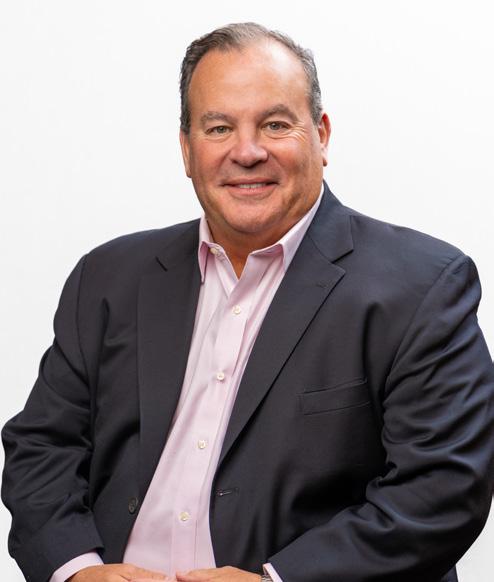





















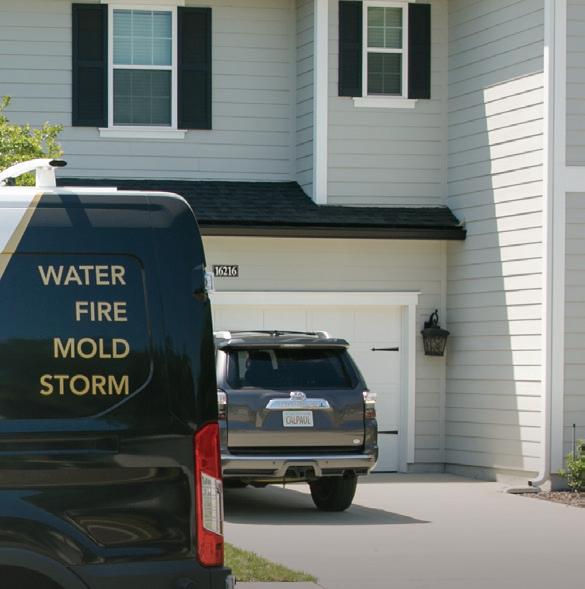









You
Iwant to talk about cat events. No. This isn’t related to a grouping of our feline friends, rather it’s the term most insurance companies use to describe an area-wide catastrophic weather event—such as the floods that hit Texas, North Carolina, parts of the mid-Atlantic region or the wildfires in California. However, those events don’t have to encompass vast areas, they may only affect a part of a state or several towns.



With mountains and cold temperatures just a few hours from the much warmer coastline, much of the Northeast can have some rather odd weather. This can create gusting winds—not necessarily a hurricane or tornado—just highspeed winds (i.e., 75 mph or more). When two opposing temperature masses meet, it also can create some rather nasty thunderstorms—with possible hail and sleet tossed in for good measure. Now, place all that in the middle of January or February and you’ve changed the entire outcome, which can involve massive amounts of snow or ice. By themselves, these weather effects can wreak havoc on properties. However, add in a loss of power from those storms, and the possible problems with the houses in those areas have now doubled or even tripled.
As an insurance agent, are you prepared to handle the large influx of claims in such a short period of time?
In such events, communities often band together to make things happen—neighbors help neighbors. Will you be able to assist by taking these claims calls and working with your insureds and your local utility and restoration companies, to triage each claim? Or will you simply send them off to their insurance company’s 800 number or claims website?
Let’s look at what could come your way during one of these crisis events, and then identify some solutions.
High winds can peel off roof shingles and siding, and they can cast tree limbs and other debris through windows. Wind-driven rain can soak the interiors of houses, it can cause trees to come down, and it can damage vehicles and outbuildings. Power failures can cause sump pumps to stop working and basements to flood.
Each of these aspects carry with them a multitude of questions and a multitude of needs. Consider the following example: Your insured calls you in a panic. A tree came down, and it knocked out power to his house. The tree hit the house and damaged the roof and the siding. Now water is raining in through the hole in the house’s roof. And, to top it off, the tree also hit his car, and there’s a dent in the hood.
After calming your insured down, and offering assuring words, you (the agent) can get the claim filed and confirm coverage and/or limits for each aspect of the loss. Because you’re local—and not a 1,000 miles away sitting at a desk at XYZ Insurance Co.—you can make a difference in your
insured’s life by knowing people who can assist in tarping the roof, and setting up alternative living arrangements so your insured has a place to stay. You can offer advice on who can help remove the tree from the property, and you can make some suggestions about certified autobody shops in your insured’s area. And, don’t forget about the process of moving and cleaning items from the house, and rebuilding what needs to be restored. All these actions will help secure the house and mitigate the water damage—which also can reduce the size of the insurance claim.
Now, take that and multiply it by 100 or 1,000. In an area-wide cat event, you may be working this same scenario repeatedly. Each loss will have its nuances, but the framework will be the same. Calling in the troops and helping to make things happen sooner will make an enormous difference in the length of time to completion. This is important because if the houses aren’t secured, mitigated and stabilized, a myriad of additional problems will arise.
Sending your insureds off to the 800 number will only delay the process, as someone far away tells your client, in essence, to run their own show. Now, your panicked homeowner is trying to find different companies that will:
• remove the tree,
• tarp the roof and board up the house,
• move and fix the car, and
• help your insured find a place to spend the night.
This may be standard operating procedure—and if it is a one-house occurrence, maybe that isn’t so bad (unless you’re the homeowner). However, when multiplied out through a hundred of your clients, this becomes a community crisis.
Lack of action in the example mentioned previously can open a house to theft, mold growth issues and even rodent/ animal incursion—damage that may be excluded from the homeowner’s insurance policy. You’re one of the professionals in this insurance claim world, and your clients may be looking to you for guidance.
While nobody would expect their agent to swing a hammer or extract water from a water-drenched home, you can be the facilitator.
If the previous example happened in the winter months— with the possibility of sub-zero temperatures—there would



be other factors to consider—which could open a new can of worms—including:
• the possibility of broken pipes,
• overloaded generators, or
• heat or fire damage caused by alternative heating sources.
When the weather turns cold that’s when plumbers, HVAC professionals and mitigation companies become heroes, and if professional insurance agents know who to call in an emergency, they become part of the solution, as far as their insureds are concerned.
Of course, the old Boy Scout slogan is Be Prepared. One can start by helping clients be prepared by engaging in conversations and asking the right questions.
First, start with the necessary insurance policy questions and updates:
• Have there been any life changes that would require policy updates?
• Have there been any updates or remodeling that needs to be taken into consideration?
• Have you kept up with your regular household maintenance?
• Do you know the difference between actual cash value and replacement cost value?
Second, send reminders to ask them:
• Are your fire extinguishers up to date?
• Do you have fresh batteries in your smoke alarms?
• Have you considered alternate power sources (e.g., generators, solar panels/solar batteries)?
These conversations and reminders keep your agency name in front of your clients, and they may even prevent a claim.
You’ve helped your clients prepare, now don’t forget to prepare your agency. Ask yourself the following question: In the event of a catastrophic weather event can my agency staff handle an inundation of insurance claims calls? If you think the answer to this question is: No, can you enlist people to help with the triage? A local employment agency, or maybe just a friend or family member?
Once you are ready to receive the claims calls, now you’ll need to build your network of trades. Restoration companies, which can be specialized, often have a network of tree experts, plumbers, asbestos abatement and environmental companies, dumpster companies, companies that offer additional living arrangements, electricians, roofers/contractors, mitigation and contents experts.
However, it’s never a bad idea to have too many contacts, so you can tell a client: “I gotta guy!” If you have an emergency folder in your desk and on your computer, with the names and numbers of these various vendors, you’ll be able to refer your clients to the companies that can best facilitate their claims, and help keep things moving forward for your insureds.
I would bet that some of these vendors come through your office regularly to hand out information on their companies. You also can search for the specific companies (e.g., electricians, plumbers, tree companies, auto glass, auto body, towing/recovery companies) you need online. Don’t forget to check them out:
• Run a Google search and read the reviews.
• Contact the Better Business Bureau and review each company for claims against it.
• Speak with the representatives who visit. Ask them how prepared they are for catastrophic events.
• Check with your insurance companies to see if any of the companies are on their preferred vendor lists.
• Talk to your clients who have had previous claims. Ask them which companies they used and how they would rate the service.
Once you’ve reviewed the companies, reach out to them to ask if they would like to be part of your emergency preparedness team.
You can go the extra mile and build a list of local hotels, restaurants and local hardware stores—use the same criteria to vet them before recommending them to your clients.
Once you have your lists together, compile them in an easyto-read format, so that you can share names and contact information with your clients easily. Do this now. Don’t wait until a cat event happens in your area to have a basic idea of an untested list of companies.
Don’t forget the disclaimer
While it would be nice if you can get positive testimonials from some of your clients who have used these companies in the past, don’t forget to include a disclaimer. Let your insureds know that you’ve “heard good things about Company A, but you can’t claim any responsibility for overall
outcome.” If the company is a preferred vendor for the insureds’ insurance company, let them know that too.
And, if you get several negative reviews from your clients about working with a specific company, it’s a good idea to remove them from your master list.
Assembling and maintaining a list like this may take some time and work, but it will be valuable to your clients when they need it, which will add value to your agency.
And, I can tell you: It is pretty good feeling to say, “I gotta guy,” and know that you’re able to help people out at a time when they might not be able to focus on finding someone themselves.
Brill has been in the restoration industry for over 25 years. He started as a basic technician working on fire and water losses for one of Connecticut’s first full-service restoration companies. He received his Institute of Inspection Cleaning and Restoration Certification’s fire restoration, odor removal, specialty carpet cleaning and electronic restoration certifications. Additionally, Brill is a level 3 Xactimate estimator. Since 2020, he has worked for Paul Davis New Haven County and Shoreline East, where he started a contents department that grew from $300,000 in revenue to over $1 million in two years, and he works in the company’s marketing department.

Dan Leporati Director of risk management, Engage PEO

Workplace violence is no longer a background issue. It’s increasingly front and center in the national conversation. With frequent headlines about mass shootings and on-the-job assaults, the topic has garnered growing attention from the public and policymakers.
According to the U.S. Bureau of Labor Statistics, 14% of the reported workplace fatalities in 2023 were attributed to acts of violence.1 This is a continuing trend over the last several years and one that’s driving more states to take legislative action.
While OSHA provides voluntary guidelines, it does not currently have a mandate for employers to implement workplace violence prevention programs. Therefore, states have the right to create safety regulations that exceed the current OSHA requirements, or in this case, create regulations that OSHA does not have in place.
Several states have implemented workplace violence prevention laws—especially for workers in high-risk environments
like health care. Illinois, Connecticut, Maine, New Hampshire, Maryland, Oregon, and Washington have legislation to protect health care professionals. The newest state to pass legislation for health care worker protection was Vermont in April of 2025. Meanwhile, California’s S.B.553, passed in 2023, extended protection across all industries—making it currently the most sweeping workplace violence legislation.
Now, New York is the newest state to enact workplace violence legislation. While New York already had enacted laws for the protection of state, city and county workers, the state recently expanded its laws to incorporate the protection for public school employees in 2024. This new legislation is the first to apply to private workplaces—specifically for the retail worker.
So, why retail workers? The data speaks for itself. Retail workers experience some of the highest rates of workplace violence. In fact, 30% of workplace fatalities in the retail sector are due to violent acts.2 That’s because these types of jobs often involve direct, high-volume interaction with the public—increasing exposure to potentially dangerous situations.
The New York Retail Worker Safety Act was signed into law on Sept. 5, 2024, and went into effect in June 2025. The act requires the state Department of Labor to create a model workplace violence prevention program, which was made available on its website on May 29, 2025.3
To meet New York state’s new law requirements, employers should follow the EAP safety principle, a three-pronged approach widely used in occupational safety disciplines that applies Engineering Controls, Administrative Controls, and Personal Protective Equipment to reduce workplace hazards:
Engineering the risk exposure out. Much of the engineering controls begin with the workplace evaluation of risk. Employers will be required to evaluate the workplace to determine the presence of factors or situations that might place employees at the risk of workplace violence. Examples of these include:
• work performed in the early or late hours of the day;
• cash exchange with the public;
• employees scheduled to work alone; and
• uncontrolled access to the workplace.
Some engineering controls can include improved lighting in the workplace, placing employees in areas where they are more visible to others, using drop safes or going cashless for transactions, installation of security cameras, and installing electronic locks or bullet-proof glass to separate workers from the general public.
Administrative controls to reduce exposure time and establish procedures to minimize risk. The establishment of the workplace violence prevention plan is the primary encompassing administrative component. This plan will more than likely model the current plan utilized for New York state’s public employee workplace violence prevention law. Typically, the requirements will include:
• A written plan to educate employees on appropriate workplace procedures pertaining to preventing workplace violence and the requirements of the law. The plan will have to be provided to employees upon hire.



• Employee training will need to be conducted for all affected employees, covering the following: de-escalation tactics; active-shooter drills; and measures employees can take to protect themselves. This can include: emergency procedures; use of security alarms and panic buttons; and procedures dealing with harassment from customers and co-workers.
• Incident reporting procedures and investigations.
• Annual review of the program to include changes necessary, based on findings and incidents incurred in the prior year.
Personal protective equipment to be the last line of defense. The New York state law has specific requirements for larger retailers to install panic buttons throughout the workplace or provide wearable or mobile-phone based panic buttons that will dispatch local law enforcement to respond automatically.
Even if employers are not legally required by their state to create a workplace violence prevention program, it would be a good practice for any insurance agency anywhere to institute a program, review it each year and adapt it as necessary.
Leporati is the director of risk management for Engage PEO. He is a seasoned insurance loss control and safety professional since 1992 with additional interest and application of data analytics to direct service needs. He has worked for the State of Florida Department of Labor, RisCorp/Zenith Insurance and Safeco Commercial. Leporati also was a business owner of Pivotal Risk Management Inc., for 12 years and president of RiskAware Insurance LLC for nine years. Specializing in loss control services, data analytics and risk portfolio management for workers’ compensation insurance carriers, temporary staffing firms and professional employer organizations, he brings a seasoned amount of knowledge and worth to Engage PEO’s team.
1 Bureau of Labor Statistics, 2024 (www.bls.gov/news.release/pdf/cfoi.pdf)
2 Bureau of Labor Statistics, 2023 (www.bls.gov/news.release/cfoi.nr0.htm)
3 New York State Department of Labor (https://dol.ny.gov/retail-worker-safety)
You may receive inquiries from your insureds asking if their current insurance policies offer coverage for active-shooter events, or if they need a separate insurance policy for the coverage. Do you know what to tell them?
Since active-shooter coverage is an emerging coverage, most common policy coverages should still afford coverage for an incident right now. However, policy forms probably will start to include exclusionary wording, so insureds will need to endorse coverage for this exposure in the future. Or, every policy will start to include an endorsement, similar to that found for assault and battery, which will remove the coverage, leaving insureds to purchase a stand-alone policy to obtain the necessary coverage. Negligence will be the main coverage issue. The questions to determine negligence will include:
• Did the company have a policy/procedure in place to outline how it would react in this situation? (Think about the policy your agency has in place regarding a cyber security breach.)
• What did the company do to mitigate an active-shooter scenario at its location?
• Did the company perform training exercises, so that employees understood how to act in the event of an active shooter?
For more information on how the general liability policy will react to an active-shooter negligence claim and discuss additional coverages for this scenario, PIA Northeast members can access Active shooter: is there coverage? (QS90979) in the PIA QuickSource library.




Dave Kahle President, Kahle Way Sales Systems
For most people, the biggest obstacle to their success resides inside them. While I have seen this lesson in scores of the companies and sales forces that I’ve worked with, I first stumbled across it as a young man. Here’s the story.
I had been the No. 1 salesperson for the company I was with, but I didn’t see any long-term opportunities, and so I decided to look for another position. I found a new job, selling surgical staplers to surgeons in the operating room. In many ways, the job was the opposite of the one I had. It paid a draw for six months against a 100% commission plan, and you had to buy your demonstration material and literature from the company. I looked at the amount of existing business in the territory I was to get, and decided that if I doubled the business, I would be back to where I had been, financially, and then could improve my standard of living from there.
So, I opted to take the risk and headed out to New York City for six weeks of sales training. While I was gone, the manager who had hired me left for a promotion, and I had a new manager. When I returned from sales training, he had urgent news for me. He had rearranged the sales territories, and the one I was now to be assigned had only a third of the existing business compared to the territory for which I had been hired.
I got angry and upset. How could the company do this to me? It didn’t look like I could make a living. So, I began to look for another job immediately. I discovered that everyone with whom I interviewed thought it was a bad sign that I was looking for another job so soon after having accepted that one. I couldn’t find another job.
Then, one day, I had a realization. It wasn’t them; it was me! Yes, the company had treated me badly. Yet, the product was incredible, and the opportunity was huge. I decided to not let my bitterness and anger hold me back, and I decided to adjust my performance. I took back my power.
While I initially stumbled across this lesson—that for most people, the biggest obstacle to their success resides inside
... if you believe that the problem is totally outside of yourself, you will forever remain a victim, helpless to improve your circumstances.
them—I found it repeatedly in my work as a sales consultant. Here’s how it manifests.
It must be human nature to look for the causes of our problems in the external environment instead of looking inward and searching ourselves. In my work with salespeople, I’ve often heard that the problem was the competition, the customer’s unrealistic expectations, the personality of the customer, the company’s inability to do something, etc. It never occurs to most salespeople that the problem might be them. Did they create a trusting relationship? Did they strive to know the customer’s situation as deeply as possible? Did they present the best solution in a persuasive and thorough way? Have they identified and addressed the customer’s concerns?
The situation is complicated by the fact that sometimes the issue is in the circumstances you are facing. However, if you believe that the problem is totally outside of yourself, you will forever remain a victim, helpless to improve your circumstances.
The next time you are faced with a serious problem, before you blame the circumstances, ask yourself, “What
did I do to create or encourage these circumstances?,” “What could I have done differently?” and “What should I do differently?”
Years ago, I attended a workshop presented by a group that studied childhood behaviors. The premise was that
we all pick up erroneous beliefs about ourselves and the world around us during our childhood, and then we spend the rest of our lives trying to overcome them.
These beliefs are so deeply embedded into our psyche that we are not even aware of them, which complicates things even more. Typically, they take

the form of our self-image. For example, I have seen salespeople who couldn’t effectively make a cold call— not because the person was incapable, but because he saw himself as limited.
Thursday, Oct. 16, 2025 | 5-8 p.m.
Anthony’s Ocean View, New Haven, Conn.
Celebrate the season and the insurance community at the CTYIP Spotlight Social, a festive fall harvest reception designed for connection, conversation and recognition.
Special Recognition:
We’ll be honoring the exceptional individuals who’ve made a lasting impact on our industry— this year’s CTYIP of the Year and Lifetime Achievement Award recipients.
Don’t miss this evening of networking, recognition and seasonal celebration! Register today! www.ctyip.org
Some time ago, while I was having lunch with the CEO of a large nonprofit organization, he asked me one of the most profound questions I’ve ever heard: “In your training, do you try to instill new skills, or do you try to remove the obstacles people have to using the skills they already have?” Clearly, he understood the point. My answer: “To be effective as a trainer, you have to do both.”
Here’s my final internal hindrance to success—lack of motivation. Often, I’ve observed that the reason most people are not successful is that they don’t want to be.
They understand that striving for excellence takes commitment, selfsacrifice, energy and investment of time, and they just don’t want to pay that price. So, they become content with moderate degrees of success. Instead of adjusting their internal beliefs, they adjust their expectations and rationalize their results.
Kahle is one of the world’s leading sales authorities. He’s written 12 books, presented in 47 states and 11 countries, and he has helped enrich tens of thousands of salespeople and transform hundreds of sales organizations with his various programs, such as Menta-Morphosis® Learning System and the Kahle Way® Selling System programs. Sign up for his free weekly Ezine (www.davekahle.com/ ezine-subscribe). His book, How to Sell Anything to Anyone Anytime, has been recognized by three international entities as “one of the five best English language business books.” Check out his latest book, The Good Book on Business
PIA technical staff
Have a question? Ask PIA at resourcecenter@pia.org
Q. Can an insurer cancel a homeowners policy solely because of catastrophe losses?
A. In 2013, the Connecticut Legislature passed H.B.6380, signed into law as Public Act No. 13-138, which prohibits this action. This bill, as described in the official summary of the act:
… prohibits an insurer from declining, canceling or failing to renew a homeowners insurance policy solely due to a loss incurred as a result of a catastrophic event, as declared by a nationally recognized catastrophic loss index provider. However, it may offer coverage through an affiliated insurer. The act prohibits an insurer from declining or failing to renew a homeowners policy, adding a surcharge on a claim, or increasing the policy premium if this action is based on any claim filed on the covered property while anyone, other than the current applicant or insured, owned the property, unless the risk from which the claim originated has not been mitigated.
So, the act prohibits an insurer from 1. canceling or failing to renew a homeowners policy, or 2. increasing its premium, if this action is based solely on inquiries made on the policy or a claim filed under it that resulted in a payment by the insurer of less than $500 or in no payment.
The prohibition does not apply if the insured filed more than one claim resulting from a noncatastrophic event in the three immediately preceding policy years that resulted in a loss coverage payment by the insurer.—Danielle Caswell, Esq.
Q. A client was involved in an automobile accident and his vehicle was determined to be a total loss. The carrier gave the client an estimate that he thinks is too low. All attempts to contact the carrier to discuss this issue have been met with silence. Is there anything my client can do?
A. Yes. First your client can investigate whether the offer made to him was fair. The New Hampshire Code of Admin-
istrative Rules Chapter Ins. 1002.15 states that when a carrier is adjusting a motor vehicle total loss, it shall determine the total-loss settlement based upon the motor vehicle’s fair-market value using one of three methods:
1. The average retail value derived from the application of a process or methodology that the department accepts as a statistically valid method of establishing fair-market value in the local market area. The methodology must be reviewed and approved by the New Hampshire Insurance Department.
2. Documented sales cost of no fewer than two motor vehicles of the same make, model and year as the total-loss motor vehicle that have occurred within the previous 90 days within the local market area.
3. If documented sales cost of a motor vehicle of the same make, model and year as the total loss motor vehicle is unavailable then:
1. documented sales cost of no fewer than two motor vehicles of like kind and quality that have occurred within the previous 90 days within the local market area; or
2. an average sales price derived from written quotations for a motor vehicle that is the same make, model and year as the total loss motor vehicle, obtained by the insurer from at least three different licensed dealerships located within the local market area, that engage in the buying and selling of motor vehicles of like kind and quality in the ordinary course of their business.
The client also can file a complaint with the NHID for the carrier’s failure to respond to attempts to contact them. Under New Hampshire Insurance Law Section 417:4, a carrier’s failure to acknowledge and act promptly upon communication with respect to claims is considered an unfair settlement practice and punishable by suspension or revocation of one’s license. In addition, an administrative penalty of not more than $2,500 for each act may be imposed.
—Bradford J. Lachut, Esq.
Q. When contractors go out of business, we always recommend they buy discontinued operations liability coverage for products and completed operations exposures going forward. If incorporated contractors dissolve their corporations, are they free from liability? For example: If a deck they built collapses and hurts someone, can they be sued? If the corporation is dissolved, can the individual officers of the old corporation still be sued? Should we still quote coverage for this potential liability?
A. The only way the officers can be held individually responsible would be if the corporate veil were to be pierced; that is, to circumvent the limited liability of the owners and to hold them liable for some underlying corporate obligation.
For more information on the corporate veil and the factors that need to be considered, log on to tinyurl.com/4mjd7duk or tinyurl.com/yc2td7ve.
Since these cases are driven by specific facts, you would not be able to give general predictions about the financial exposure they will assume by canceling the insurance. That guidance should be left to their personal attorney. —Danielle Caswell, Esq.
Q. When water backs up into an insured’s home—due to the overflow or the incapacity of the sewer system to handle the volume—is there coverage under the homeowners policy?
A. In general, no. The ISO homeowners policy excludes damage caused by water or water-borne material that:
• backs up through sewers or drains; or
• that overflows or is discharged from a sump, sump pump or related equipment.
The policy also excludes damage from water or water-borne material below the surface of the ground—including water that seeps or leaks through a building or foundation.
However, ISO does have its HO 04 95 Limited Water Back Up and Sump Discharge or Overflow Coverage and HO 06 95 (HO 34 49 NY) Broadened Water Back-Up and Sump Discharge or Overflow Coverage endorsements, which provide a selection of limits (e.g., $5,000, $10,000, $15,000, $20,000 or $25,000) to cover events like this.
Unfortunately, the 2000 edition and now the current 2014 edition endorsements (unlike the 2011 edition) do not cover such backup or overflow if it is the result of a flood or surface waters—when the sewer system is incapable of handling an increase of volume of water.
—Dan Corbin, CPCU, CLU, LUTC
Q. When a property has experienced reoccurring flood losses, and then that property is sold, does the reoccurring loss get reset?
A. No. The loss history stays with the house from owner to owner. Section 21 of the Flood Insurance Manual addresses severe repetitive losses in which National Flood Insurance Program insured property meets at least one of the following paid flood loss criteria, regardless of ownership:
• four or more separate claim payments of more than $5,000 each (including building and contents payments); or
• two or more separate claim payments (building payments only) in which the total of the
payments exceeds the current value of the property.
The Flood Mitigation Assistance Program was authorized by the National Flood Insurance Reform Act of 1994 and it was amended by the Biggert-Waters Flood Insurance Reform Act of 2012. This program may provide federal grant funds to pay for up to 100% of the cost of eligible mitigation activities, such as elevating the structure. Mitigated properties may qualify for reduced flood insurance rates.
—Dan Corbin, CPCU, CLU, LUTC
Q. Because of weakness caused by termites, a tree fell from a neighbor’s yard onto my insured’s home. Should my insured make a liability claim against the neighbor, or should she present a property claim against her policy?
A. To recover from the neighbor, your insured must prove the neighbor was negligent in the maintenance of the tree.
To prevent delays in repairing the damage, turn this in as a property claim, and let the insurer decide whether to subrogate.—Joseph Patterson
Q. I just had a claim denial for a power surge to a central air-conditioning unit. The insurer is claiming the air-conditioning unit is excluded under Coverage C–Personal Property. I would think the air-conditioning unit should be covered under Coverage A–Dwelling. The insurer states that coverage requires a home systems breakdown endorsement.
A. The central air-conditioning unit is part of the dwelling and it will be covered by dwelling perils. In the ISO HO-3 policy, the following is the only
dwelling peril exclusion that is related to electrical current:
4. Power failure
Power failure means the failure of power or other utility service if the failure takes place off the “residence premises.” But if the failure results in a loss, from a peril insured against on the “residence premises,” we will pay for the loss caused by that peril. The usual meaning of the term failure, as found in a standard dictionary, is “an omission of occurrence or performance.” Absent a specific definition of power failure in the policy, it is this definition that must be applied. Therefore, any damage caused by the cessation of power would qualify as damage caused by a power failure. However, damage caused by a surge of power is not an omission of occurrence or performance, and it would not
fall under the power failure exclusion, properly applied. Therefore, a home systems breakdown endorsement will not be needed.
If lightning caused the power surge, then there will be even more certainty of coverage.
Contrast this with the ISO commercial property special-form perils exclusion, which is specific:
2. We will not pay for loss or damage caused by or resulting from any of the following: [emphasis added]
a. Artificially generated electrical, magnetic, or electromagnetic energy that damages, disturbs, disrupts, or otherwise interferes with any:
(1) electrical or electronic wire, device, appliance, system, or network; or




(2) device, appliance, system, or network utilizing cellular or satellite technology.
For this exclusion, electrical, magnetic or electromagnetic energy includes but is not limited to:
(a) electrical current, including arcing;
(b) electrical charge produced or conducted by a magnetic or electromagnetic field;
(c) pulse of electromagnetic energy; or
(d) electromagnetic waves or microwaves.
But if fire results, we will pay for the loss or damage caused by that fire.
Equipment breakdown insurance will be required for commercial property coverage.—Dan Corbin, CPCU, CLU, LUTC



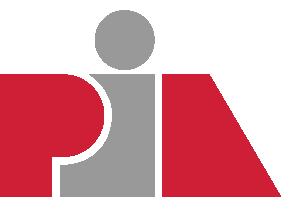






President
Kevin P. McKiernan, CIC, CPIA Abercrombie, Burns, McKiernan & Co. Insurance Inc.
484 Post Road, Ste. A Darien, CT 06820-3651 (203) 655-7468 kmckiernan@abmck.com
President-elect
Katie Bailey, CPIA, ACSR, CLCS
The Russell Agency LLC
317 Pequot Ave. PO Box 528 Southport, CT 06890-0528 (203) 255-2877 kbailey@therussellagency.com
Treasurer
Kimberly A. Tompkins, CIC, CPIA, AIS, AINS, PHM, CRIS, ACSR
The Mutual Group/GuideOne Mutual 1111 Ashworth Road W. Des Moines, IA 50265-3572 (515) 267-5785 ktompkins@guideone.com
Secretary
Jeffrey A. Krar
Joseph Krar & Associates Inc. 1676 West St. PO Box 580 Southington, CT 06489-0580 (860) 628-3967 jkrar@jkrar.com
Immediate Past President
Nick Ruickoldt, CPIA, CISR The Russell Agency LLC 317 Pequot Ave. PO Box 528 Southport, CT 06890-0528 (203) 255-2877 nruickoldt@therussellagency.com
PIA NATIONAL DIRECTOR
Jonathan Black, LUTCF, CPIA, CLTC, NAMSA, NSSA Johnson-Stevens-Curran 74 West St. Danbury, CT 06810-6531 (203) 743-2844
DIRECTORS
Scott Burns
XS Brokers Insurance Agency Inc. 225 Asylum St. Hartford, CT 06103-1516 (617) 471-7171 sburns@xsbrokers.com
Anthony DeSalva Georgetown Financial Group 73 Redding Road Redding, CT 06896-3210 (201) 544-9300 anthony@gfginc.com
Ryan Kelly USI Connecticut 10 Middle St. Bridgeport, CT 06604-4257 (203) 258-0834 ryan.kelly@usi.com
Nicholas Khamarji Jr. New England Insurance PO Box 125 Easton, CT 06612 (203) 445-3594 NGK325@gmail.com
Justin Sloan Nesso Group 409 Canal St. PO Box 790 Milldale, CT 06467 (860) 374-4010 jsloan@nessogroup.com
CTYIP REPRESENTATIVE
Justin Sloan Nesso Group 409 Canal St. PO Box 790 Milldale, CT 06467 (860) 374-4010 jsloan@nessogroup.com
ACTIVE PAST PRESIDENTS
James R. Berliner, CPCU Berliner-Gelfand & Co. Inc. 188 Main St., Ste. A Monroe, CT 06468-1149 (203) 367-7704 jim@berlinerinsurance.com
Mark Connelly, CIC Fairfield County Bank Insurance Services 401 Main St. Ridgefield, CT 06877-4513 (203) 894-3123 mark.connelly@fcbins.com
John DiMatteo, CPFA, CFP DiMatteo Group Financial Services 1000 Bridgeport Ave., Unit 506 Shelton, CT 06484-4660 (203) 924-5408 jdimatteo@dimatteofinancial.com
J. Kyle Dougherty, CIC Dougherty Insurance Agency Inc. 2420 Main St., Ste. 5 Stratford, CT 06615-5963 (203) 377-4394 kyle@doughertyinsurance.com
Peter Frascarelli, CPIA Ferguson & McGuire 6 North Main St. Wallingford, CT 06492-3741 (203) 269-9565 pfrascarelli@fergusonmcguire.com
Michael F. Keating
Michael J. Keating Agency Inc. 10 Arapahoe Road PO Box 270048 W. Hartford, CT 06127-0048 (860) 521-1420 mfkeating@keatinginsurance.com
Howard S. Olderman Olderman & Hallihan Agency 400 Main St. Ansonia, CT 06401-2303 (203) 734-1601 howard@oldhalins.com
Bud O’Neil, CPIA C.V. Mason & Co. Inc. PO Box 569 Bristol, CT 06011-0569 (860) 583-4127 boneil@cvmco.com
Gerard Prast, CPIA XS Brokers Insurance Agency Inc. 13 Temple St., Floor 1 Quincy, MA 02169-5110 (617) 471-7171 gprast@xsbrokers.com
Shannon Rabbett, CIC Rabbett Insurance Agency dba JMG Insurance Group 225 Rollingbrook Windsor, CT 06095-1363 (860) 212-3559 srabbett@jmg.com
Augusto Russell, CIC NFP
29 S. Main St., Ste. 300 West Hartford, CT 06107-2420 (860) 764-0555 augusto.russell@nfp.com
Timothy G. Russell, CPCU The Russell Agency LLC 317 Pequot Ave. PO Box 528 Southport, CT 06890-0528 (203) 255-2877 trussell@therussellagency.com
12 AFCO Direct
14 Agricultural Insurance Management Services
10 AON Affinity Travel Practice
BC Applied Underwriters
22 Berkshire Hathaway GUARD Insurance
28 CTYIP Fall Reception
15 Ironpeak
11 JENCAP
24 NLC Insurance Cos.
31 Ohio Mutual Insurance Group
7 Omaha National 17 Paul Davis Restoration
26 PIA E&O Insurance
32 PIA Members’ Choice
34 PIA Northeast Advertising
16 PIA NumberONE Comp Program
2 The Premins Company
8 Venbrook Group
For more information about an advertiser, email ads@pia.org, or call (800) 424-4244
OFFICERS
President Casey Hadlock
Hadlock Agency Inc. 150 Old County Road Littleton, NH 03561-3628 (603) 444-5500 casey@bestinsurance.net
Vice President
Jeffrey Foy, AAI 4 Fox Hollow Court E. Kingston, NH 03827-2036 (603) 778-5036 jefffoy1889@gmail.com
Secretary/Treasurer
Alex Kapiloff, CPCU, CLU, CIC, AAI Kapiloff Insurance Agency Inc. 417 Winchester St. Keene, NH 03431-3914 (603) 352-2224 akapiloff@kapiloff.com
Immediate Past President
Keith T. Maglia
Insurance Solutions Corp. 60 Westville Road Plaistow, NH 03865-2947 (603) 382-4600 kmaglia@isc-insurance.com
National Director
Lyle W. Fulkerson, Esq. HPM Insurance 101 Ponemah Road #1 Amherst, NH 03031-2816 (603) 673-1201 lyle@hpminsurance.com
Lisa Nolan, CPCU Cross Insurance 1100 Elm St. Manchester, NH 03101-1500 (603) 669-3218 lnolan@crossagency.com
John Obrey
Obrey Insurance Agency Inc. 1B Commons Drive, Unit 13A PO Box 1018 Londonderry, NH 03053-1018 (603) 432-3883 john@obreyinsurance.com
Anthony Inverso North American Insurance Alliance 234 Lafayette Road Hampton, NH 03842-4105 (207) 831-4837 anthony.inverso@naia-consulting.com
Erik Liguori Brown & Brown of New Hampshire Inc. 309 Daniel Webster Hwy. Merrimack, NH 03054-4116 (603) 424-9901 erik.liguori@bbrown.com
Paul Riley Safety Insurance
20 Custom House St., Ste. 400 Boston, MA 02110-3516 (617) 951-0600 paulriley@safetyinsurance.com
Lori Sherman
New England Indemnity Co. 10 Corporate Drive, Ste. 2203 Bedford, NH 03110-5956 (330) 412-5534 lsherman@neindemnity.com




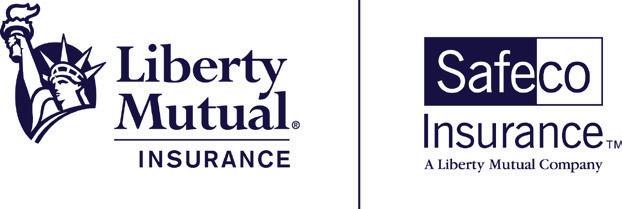



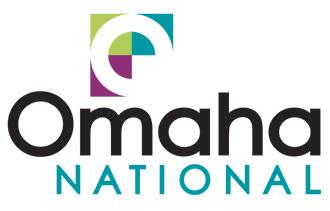




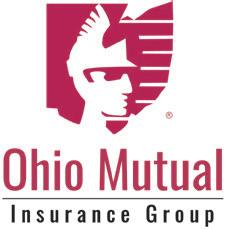


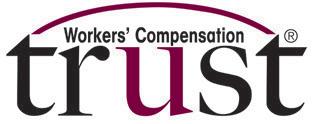

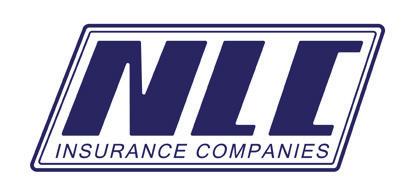
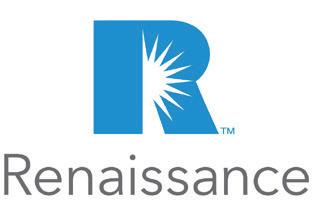


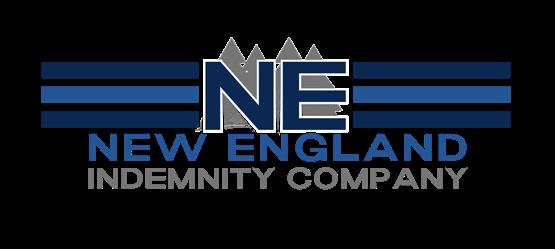




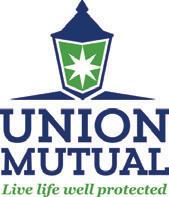
As of publication date. For more information go to pia.org.
